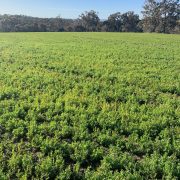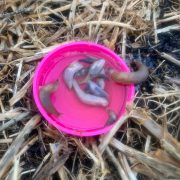TIP #4 Everlastings and Fertiliser
Soil nutrition is responsible for Everlastings that look full, tall and bright. Soil nutrition is also responsible for wheat crops that look healthy and yield well. The formula is the same, they require potassium and nitrogen and a small amount of phosphorus to grow their best. Most native plants love potassium and nitrogen, so these are two elements you need. It is best to plant your Everlastings into your well-prepared soil. Plant your seed with a small amount of fertiliser, and calculate the correct amount, as too much can lead to fertiliser toxicity. Dig the fertiliser into the top 5 cm of the soil for vigorous germination and to get the best start for the crop. At about the six-week stage after planting, Everlastings will grow vigorously, requiring a top-up in nutrition. It is an excellent time to add some nitrogen at this point. This will ensure a good display in the spring of lovely tall, plump flowers with bright blooms. The nitrogen should be in Urea or a form from your Nursery or Garden Centre. Please don’t put it on too late; otherwise, it won’t add to the everlasting plant at all.








